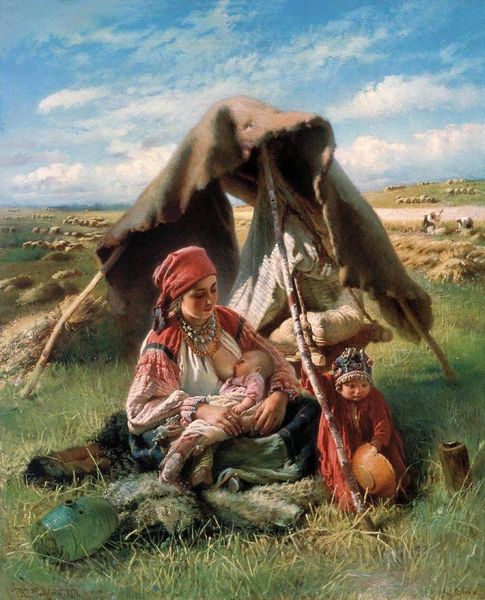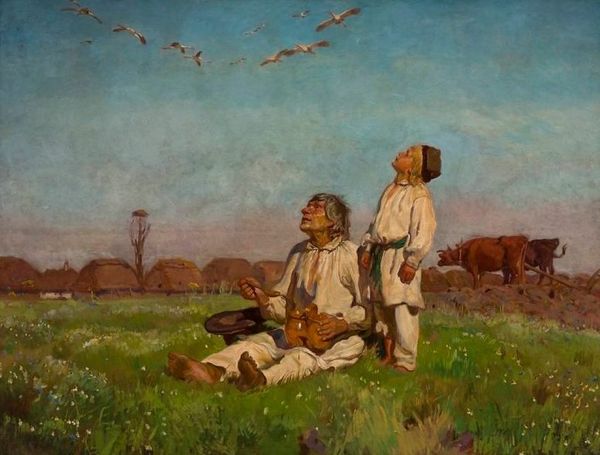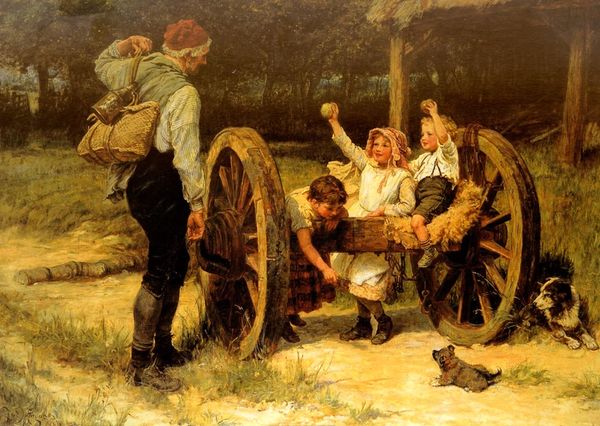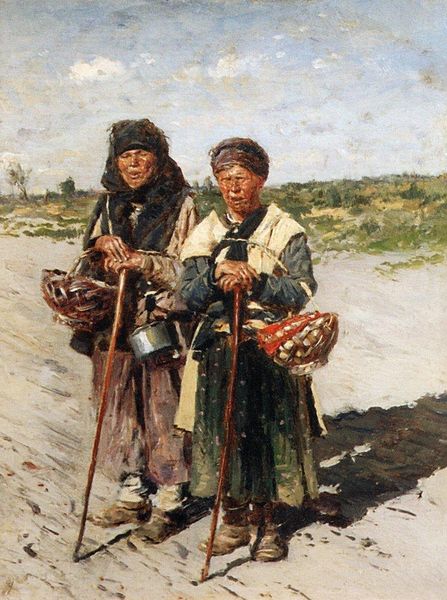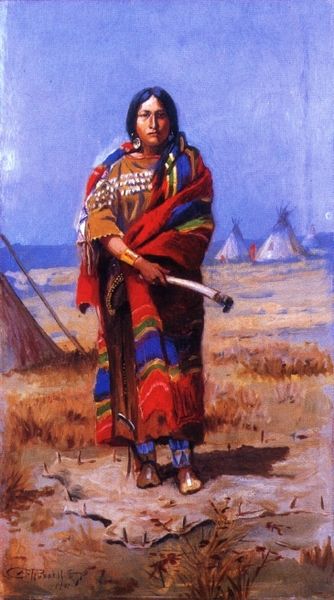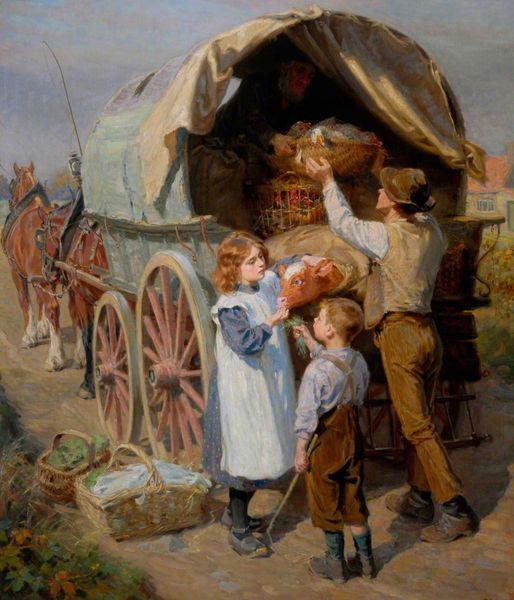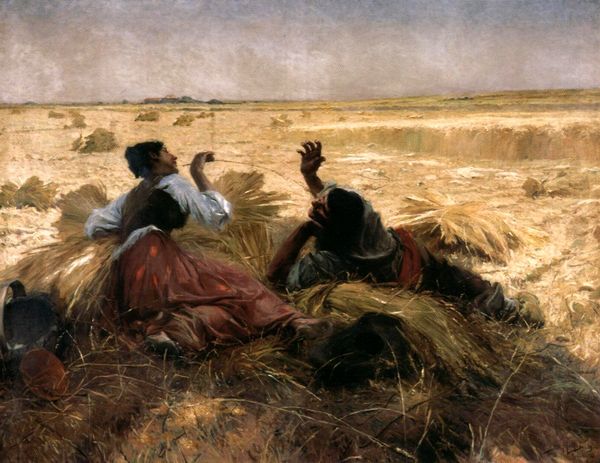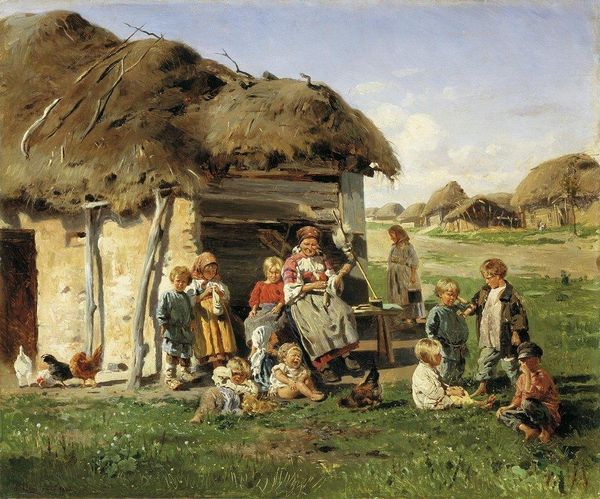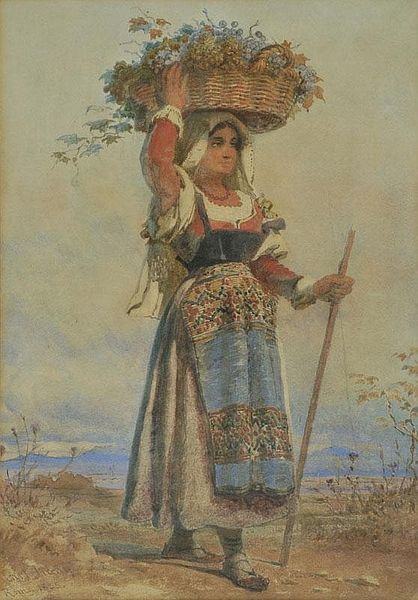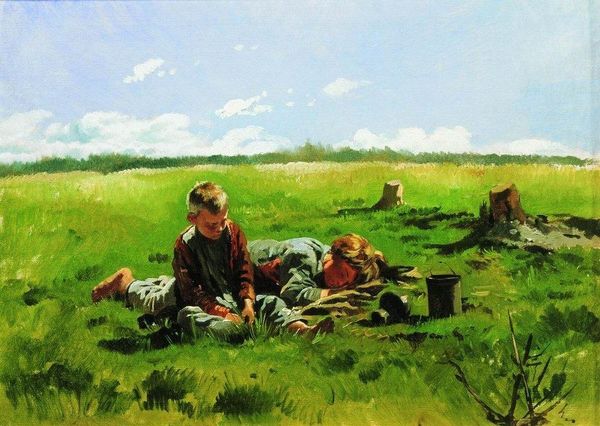
Copyright: Public domain
Curator: Let's turn our attention to Konstantin Makovsky's painting, "Children in a Field," created in 1870. Editor: What strikes me first is the stillness. The colors are muted, creating this hushed, dreamlike feeling even though it depicts children working in a field. There's a solemn quality that pulls you in. Curator: It’s quite remarkable how Makovsky combines the genres of landscape and portraiture here. Notice the texture achieved through the application of oil paint. We can see his interest in plein-air techniques. I imagine the experience of creating this artwork must have involved him immersing himself into their working world, observing children engaged in labor and daily life in rural Russia, influenced no doubt by the social realism trends of his time. Editor: I’m fascinated by the children’s attire—their headscarves, for instance, aren't just decorative; they represent modesty, piety, and perhaps even the social expectations placed upon them at a young age. There is such maturity in their gazes, this silent knowledge reflecting what's expected. Curator: Absolutely, the clothing becomes another layer to dissect; it speaks to the time and their socio-economic place within society. The tools they are using tell us about agrarian practices, family labour systems... It invites a study of what resources are needed and at what stage for them to be helping. Editor: What do you make of that structure behind them? It's covered in cloth and next to what appears to be equipment for milking animals. What do you make of its symbolism? Curator: The cloth could potentially offer some form of shelter for them and provide privacy to their activities. It reflects what labor looks like from that time but I struggle with how that integrates with the soft features given to these individuals. Editor: That's the tension in this picture, I agree. It memorialises children's innocence while also quietly registering their subjugation and what appears to be economic oppression. Curator: I see that very clearly now. These competing ideals really do come together to evoke conflicting emotions from those seeing it now and I can understand why people continue to have it resonate within their viewing experience. Editor: Indeed. Artworks, especially ones portraying labor, reflect societal values but also prompt ongoing discussions regarding their depiction. They create a continuing historical dialogue and act as a historical mirror.
Comments
No comments
Be the first to comment and join the conversation on the ultimate creative platform.
